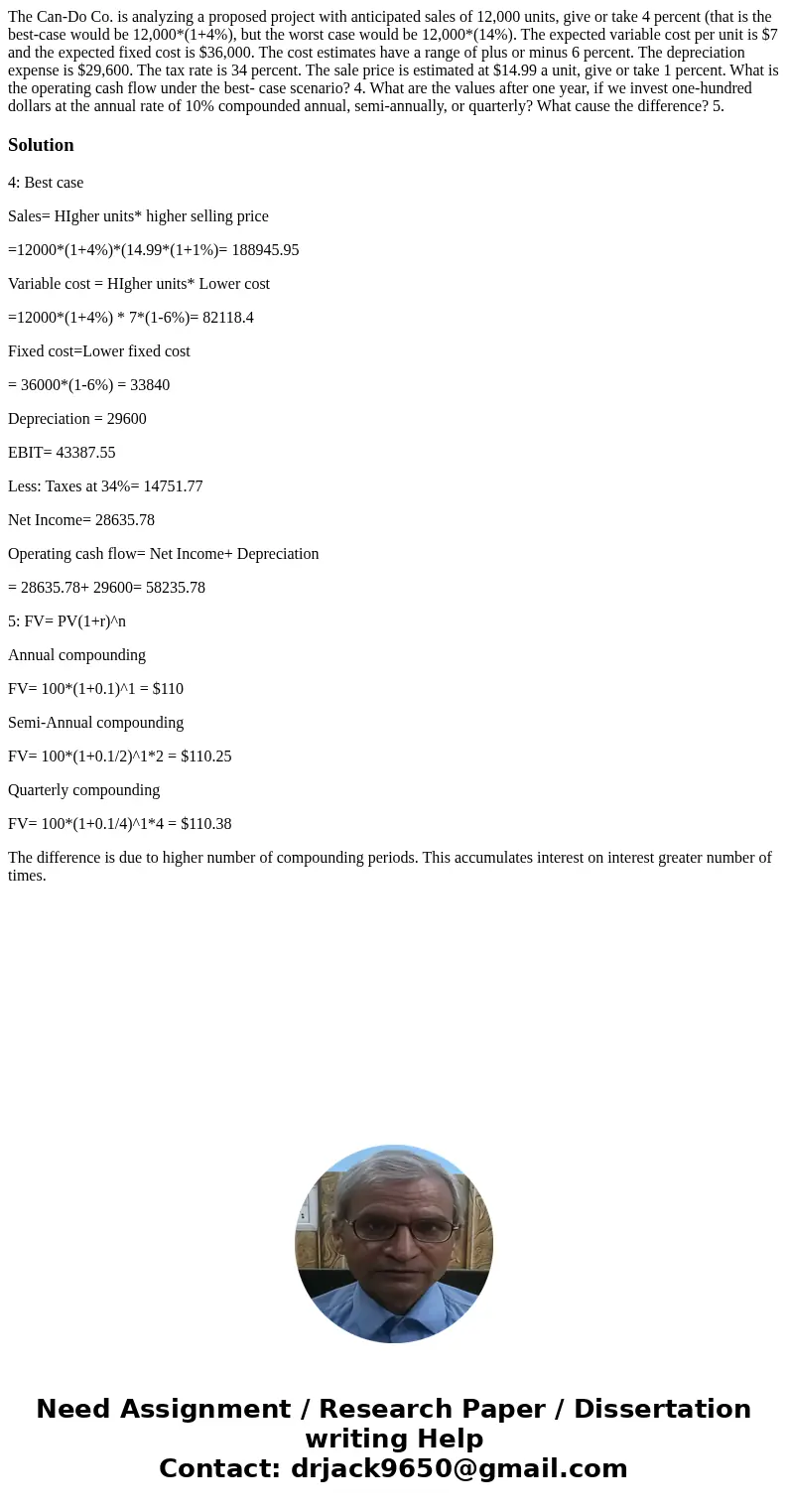The CanDo Co is analyzing a proposed project with anticipate
The Can-Do Co. is analyzing a proposed project with anticipated sales of 12,000 units, give or take 4 percent (that is the best-case would be 12,000*(1+4%), but the worst case would be 12,000*(14%). The expected variable cost per unit is $7 and the expected fixed cost is $36,000. The cost estimates have a range of plus or minus 6 percent. The depreciation expense is $29,600. The tax rate is 34 percent. The sale price is estimated at $14.99 a unit, give or take 1 percent. What is the operating cash flow under the best- case scenario? 4. What are the values after one year, if we invest one-hundred dollars at the annual rate of 10% compounded annual, semi-annually, or quarterly? What cause the difference? 5. 
Solution
4: Best case
Sales= HIgher units* higher selling price
=12000*(1+4%)*(14.99*(1+1%)= 188945.95
Variable cost = HIgher units* Lower cost
=12000*(1+4%) * 7*(1-6%)= 82118.4
Fixed cost=Lower fixed cost
= 36000*(1-6%) = 33840
Depreciation = 29600
EBIT= 43387.55
Less: Taxes at 34%= 14751.77
Net Income= 28635.78
Operating cash flow= Net Income+ Depreciation
= 28635.78+ 29600= 58235.78
5: FV= PV(1+r)^n
Annual compounding
FV= 100*(1+0.1)^1 = $110
Semi-Annual compounding
FV= 100*(1+0.1/2)^1*2 = $110.25
Quarterly compounding
FV= 100*(1+0.1/4)^1*4 = $110.38
The difference is due to higher number of compounding periods. This accumulates interest on interest greater number of times.

 Homework Sourse
Homework Sourse